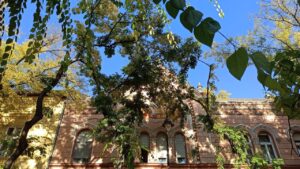How does the presence of parks and green spaces affect property prices?
The relationship between property prices and the presence of parks and green spaces has been a subject of interest for urban planners, real estate agents, and homebuyers alike. As cities continue to grow and urbanize, the importance of green spaces becomes increasingly evident. These areas not only provide aesthetic value but also contribute to the overall quality of life for residents. This article explores how parks and green spaces influence property prices, examining the economic, social, and environmental factors at play.
How does the presence of parks and green spaces affect property prices?
The presence of parks and green spaces has a significant impact on property prices, often leading to higher valuations in neighborhoods that boast these amenities. Studies have shown that homes located near parks can command a premium, sometimes as much as 20% more than similar properties situated further away. This price increase can be attributed to the desirability of living in close proximity to recreational areas, which offer residents a place to relax, exercise, and socialize. As urban areas become denser, the demand for accessible green spaces grows, further driving up property values.
Moreover, parks and green spaces contribute to the overall appeal of a neighborhood. They enhance the aesthetic quality of an area, making it more attractive to potential buyers. A well-maintained park can serve as a focal point for community activities, fostering a sense of belonging among residents. This social aspect is crucial; neighborhoods with vibrant community spaces tend to attract families and individuals looking for a supportive environment. Consequently, the presence of parks not only elevates property prices but also enhances the overall livability of the area.
Additionally, the economic benefits of parks extend beyond immediate property values. Green spaces can stimulate local businesses by attracting foot traffic and encouraging outdoor activities. Cafés, shops, and restaurants near parks often see increased patronage, which can lead to higher rental prices and property values in the vicinity. Furthermore, the long-term sustainability of neighborhoods with ample green spaces can lead to stable property markets, as these areas are less susceptible to the fluctuations that can affect urban environments lacking such amenities.
In conclusion, the presence of parks and green spaces plays a crucial role in shaping property prices and the desirability of neighborhoods. As urbanization continues to rise, the demand for accessible green areas will likely increase, further influencing real estate markets. Homebuyers and investors are becoming increasingly aware of the value that parks bring, not only in terms of property appreciation but also in enhancing the quality of life. As cities strive to create more sustainable and livable environments, the integration of parks and green spaces will remain a key factor in urban planning and property development.


